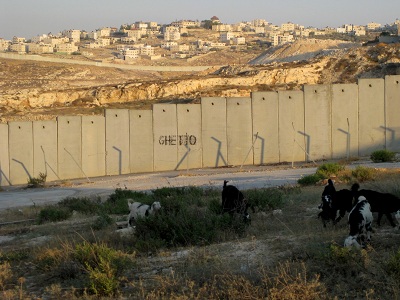
A Santiago-based court in Chile on Monday filed a war crimes lawsuit against three Israeli Supreme Court justices for approving the construction of the Israeli separation wall, declared illegal by the International Court of Justice (ICJ) in 2004.
According to Israeli newspaper Haaretz, the lawsuit was filed by six Palestinian landowners in Beit Jala in the occupied West Bank district of Bethlehem and alleged war crimes, including crimes against humanity, against former chief Justice Asher Grunis, and Justices Neal Hendel and Uzi Vogelman.
The claimants reportedly own the land that is expected to be cut off from their village by the separation wall, while five of the plaintiffs are Chilean nationals, Haaretz reported.
Hundreds of thousands of Palestinians migrated to Chile over the last century, resulting in a large Palestinian diaspora community in the South American country, while many Palestinians with Chilean nationality also reside in the West Bank, particularly in Beit Jala.
Top Israeli justices face war crimes suit in Chile for authorizing West Bank wall https://t.co/RAnwVCvU0R
— noel coward (@noelco777) November 29, 2016
Haaretz added that as the lawsuit continues to unfold, more individuals could be charged with authorizing the wall’s construction in violation of international law.
Residents in Beit Jala have been engaged in a decade-long legal battle against a 2006 Israeli military order to build the separation wall around Beit Jala and the illegal Israeli settlement of Har Gilo.
In 2013, 58 local landowners, as well as nuns from the Silesian women’s monastery in Cremisan who joined their legal action, lost an appeal against the route of the separation wall. Residents hoped that an Israeli Supreme Court decision in 2014 –which ordered the Israeli state to justify the route of the separation wall in Beit Jala’s Cremisan valley — was an indication that the proposed land seizure could be canceled.
However, in July last year the Israeli Supreme Court approved the construction of the wall using an alternative route, which would still separate the Salesian monastery and convent from the community it serves in Beit Jala, while swallowing the Cremisan Valley onto the Israeli side of the separation barrier.
When complete, the majority of the wall’s construction, 85 percent, will have been built inside the occupied Palestinian territory over the Green Line, consuming vast tracts of Palestinian land along its way and consuming land in Area C — the two-thirds of the the West Bank that are under full Israeli military and civil control — where illegal settlements have been built or are planned to be constructed in the future.
(Ma’an, PC, Social Media)




